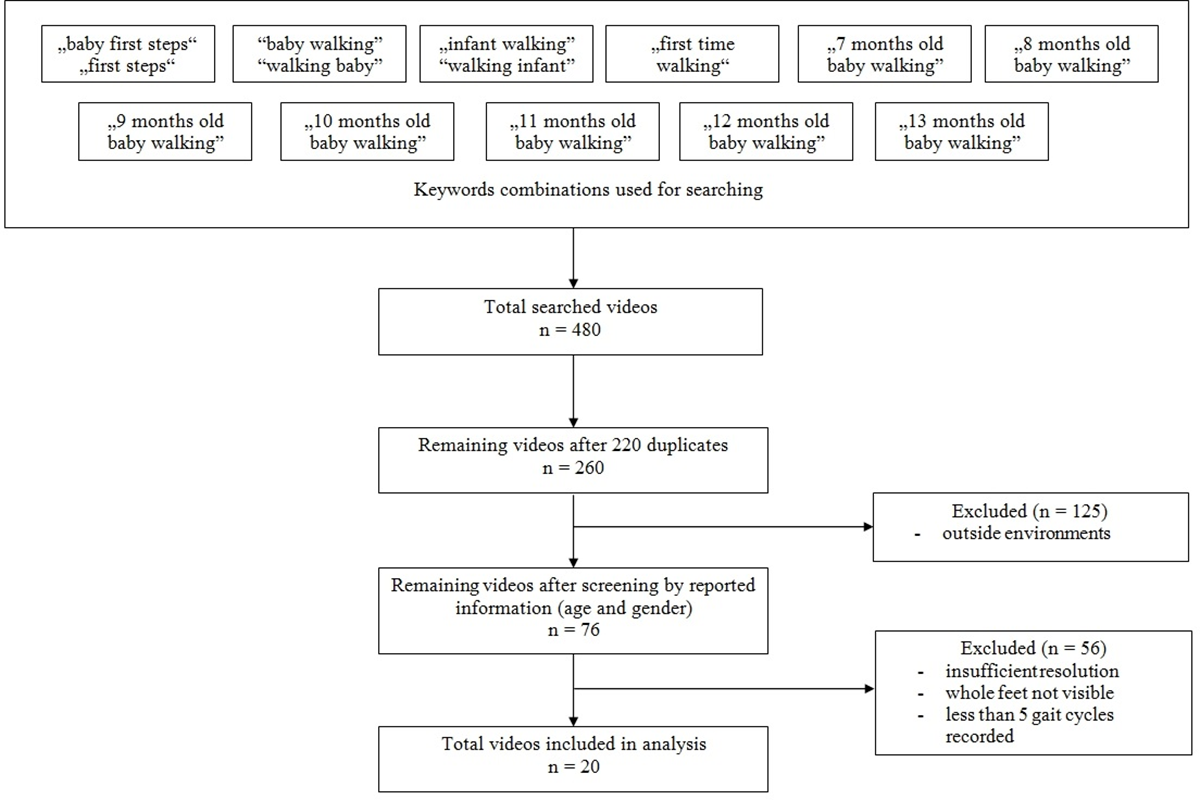How do novice and improver walkers move in their home environments? An open-sourced infant’s gait video analysis
Objective
Natural independent walking mostly occurs during infant´s everyday explorations of their home environment. Gait characteristics of infant walkers at different developmental stages exist in literature, however, data has been only collected in laboratory environments, which may reduce gait variability, therefore mask differences between developmental stages of natural gait. The aim of the study was to provide the first data set of temporal and functional gait characteristics of novice and improver infant walkers in familiar environment conditions in their home. We hypothesised that familiar environment conditions may effectively demonstrate natural gait characteristics and real differences in gait variables differing between 2 groups of developing infant walkers.
Methods
In a cross-sectional design; we used open-source videos of infants in their home environments: twenty videos of 10 novice (5 girls, 5 boys, 7–12 months) and 10 improver (4 girls, 6 boys, 8–13 months) walkers were chosen from an open-source website. 2-D video gait analysis was undertaken for these parameters: falls frequency, frequency of stops, gait cadence, and time of stance phase, swing phase, and double support. Between groups comparison for novice versus improver was investigated by Mann-Whitney U tests (p ≤ 0.05) with determination of effect size of Pearson r correlation.
Results
Statistically significant differences between groups with large effect sizes were found for these parameters: falls frequency (p = 0.01, r = 0.56); cadence (p = 0.01, r = 0.57); stance phase duration of right leg (p < 0.01, r = 0.63); stance phase duration of left leg (p = 0.01, r = 0.56); and double support phase duration (p < 0.01, r = 0.69). Novices scored higher in comparison with improver walkers in all the parameters except cadence.
Conclusions
This study presents the first data set of functional and temporal gait parameters of novice and improver infant walkers in their home environments. As an addition to recent research, novice infants walk with lower cadence and higher falls frequency, stance phase time and double support in their familiar environments. With increasing experiences, infant´s cadence increases while the other parameters decrease.


